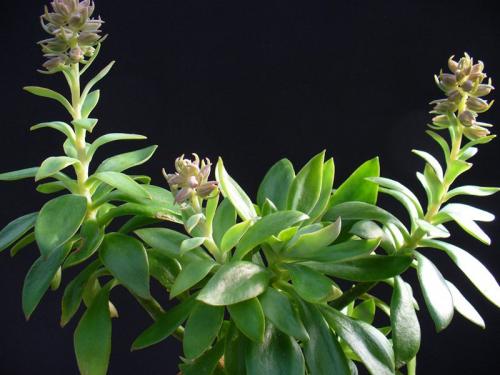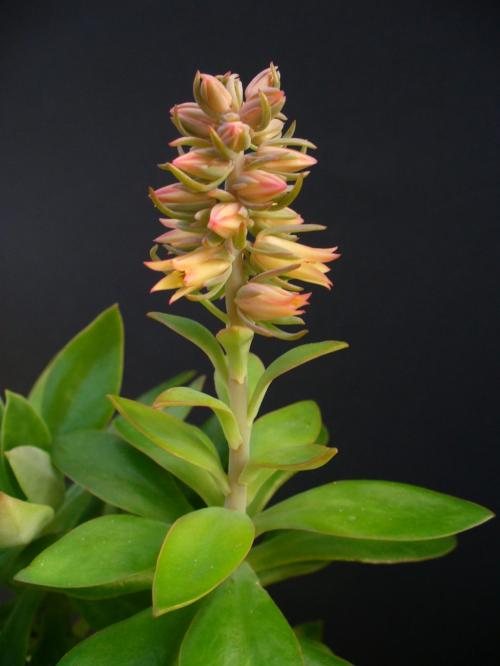PITTIERI Rose, 1911
Series Spicatae
Type : Pittier 1880, collected around the lagoon on the Volcan Ipala, Guatemala, 1500 m, 1907. (US 618381)
Etymology : Named for Henry Pittier, collector of Central American and Venezuelan plants.
Distribution : Guatemala (Departments Chiquimula, Sololá, Zacapa, El Progreso, Huehuetenango, Jutiapa, Totonicapán, Quetzaltenango) ; Nicaragua (Dept. Jinotega) ; El Salvador ; Costa Rica (West coast) ; epiphytic or on rocks in shaded forests.
First Description by Rose in Contributions from the US National Herbarium 13(9): 296. 1911 :
Caulescent, 10 cm or more high, crowned at the apex by a loose rosette of leaves, glabrous throughout.
Leaves 6 - 8 cm long, oblanceolate, tapering into a distinct petiole, acute, greenish or somewhat purplish, sometimes a little glaucous.
Flowering stem about 20 cm long, leafy, leaves similar to stem leaves.
Inflorescence a dense spike 4 - 5 cm long, flowers subtended by small linear rose-colored bracts and two inner bractlets.
Flowers : Calyx cleft nearly to the base into linear, acute lobes about two-thirds the length of the corolla, rose-colored, corolla when in bud somewhat 5-angled, corolla about 12 mm long, deeply cleft, the lobes stiff, erect or slightly spreading, acute, rose-colored, with a pronounced pocket near the base within, 5 stamens opposite the 5 petals inserted just above this pocket, the other 5 attached to the corolla but lower down, ovaries erect, tipped by the long, slender styles.
Cytology : n = 62.
Note :
1. Walther's description of E. pittieri is made from a plant of unknown origin and therefore is of no use.
2. The photo of this species in Pilbeam, The genus Echeveria, Fig. 284, p. 209, 2008, is completely wrong.
3. The following specimens from El Salvador have been wrongly determined :
Galán 2223, Field Museum 2316657 / Missouri Bot. Gard. 6659026 is E. pittieri, not E. guatemalensis.
A. Molina 21614, Field Museum 1767765 is E. pittieri, not E. guatemalensis.
A. Molina 21791 is E. pittieri, not E. guatemalensis.
Linares 2505 / Missouri Bot. Gard. 04999035 is E. pittieri, not E. guatemalensis.
A. Molina 21740 / Field Museum 1671760 is E. pittieri, not E. guatemalensis.
Missouri Bot. Gard. nrs :
04920279 is E. pittieri, not E. guatemalensis
2260157 is E. pittieri, not E. maxonii.
Field Museum nr 1048238 is E. pittieri and not E. maxonii.
Leland Smith : Echeveria pittieri in northern Nicaragua :
Fig. 1 :
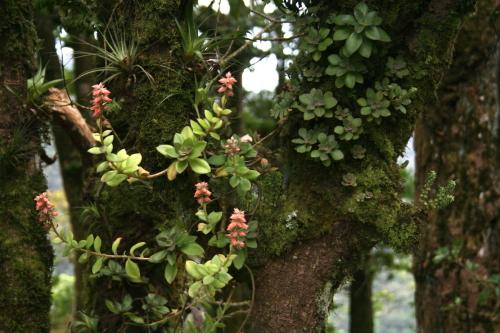
Fig. 1 shows the original plants from Esteli Department which I discovered in 2011 while looking for native cacti in the Tisey Natural Reserve. They were handsome plants growing on trees in shade in cloud forest at about 1500 m elevation. I was unable to identify these with the literature available to me at that time. Years later, with the help of Margrit Bischofberger, I received a proper description of E. pittieri and was able to identify them.
Fig. 2 :
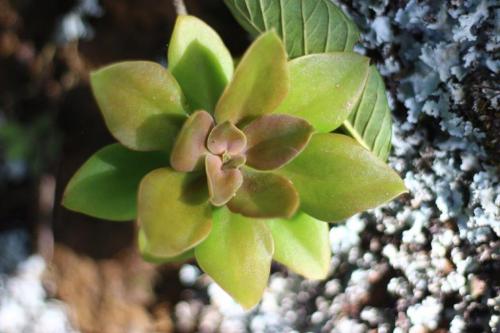
Fig. 2 shows plants that appeared on a lichen substrate on a rock near my greenhouse at 1300 m elevation. I assumed they were voluntary seedlings and I moved one specimen to the greenhouse where it grew into a mature plant consistent with the original Tisey plants. The plants that remained on the rock survived and flowered but are stunted and have not yet developed the mature leaf shape.
Fig. 3 :
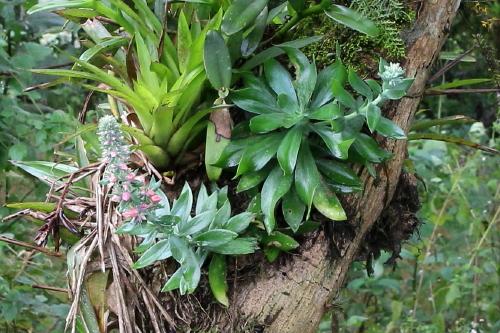
Fig. 3 is a specimen in habitat at 1200 m in the San Luis Community in Esteli Department. Note : The leaves on the flowering stalk, i.e. the bracts, have a different colour and texture than the rosette leaves. The flowers had a slightly pinkish tint but one growing nearby in full afternoon sun had the more typical light orange colour.
Fig. 4 :
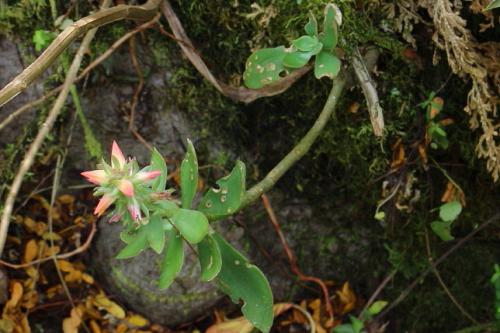
Fig. 4 shows a lone specimen from 1200 m in pre-montane forest on Pena de la Cruz Mountain in Jinotega Department. Compared with the Tisey and San Luis plants, the rosette is significantly smaller - probably due to climate stress.
Fig. 5 :
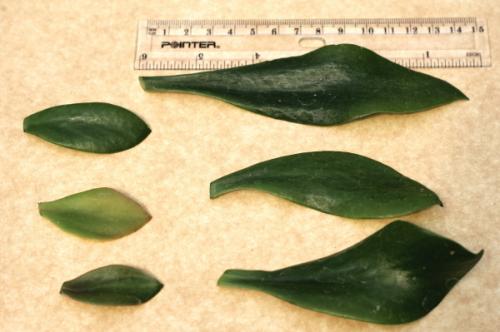
Fig. 5 shows the considerable variation in leaf and bract shape depending on maturity and growing conditions. I would describe them to be lanceolate to oblanceolate but note the leaf shape on the new plants on photo 2. Purple coloration is sometimes found on new growth and will eventually turn green. Mature leaf tips are sometimes twisted.
Fig. 6 :
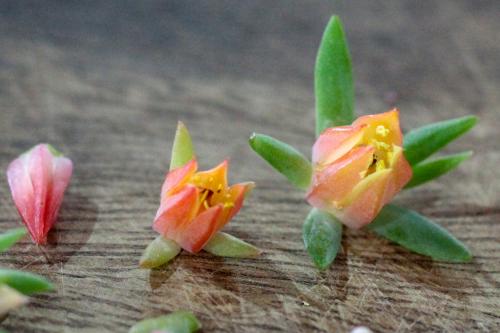
Fig. 7 :
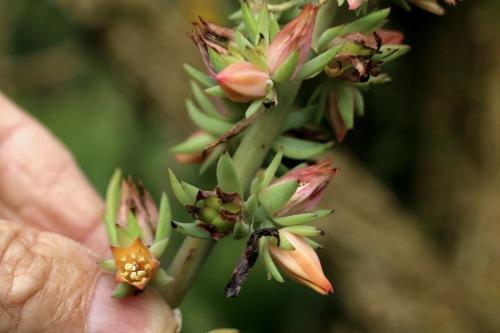
Figs. 6 and 7 show flowers. Buds are greenish or dull red when mature. Exterior flower parts appear to be light orange, pinkish or reddish orange when seen from a distance of a few meters. Mature exterior flowers are dull red with yellow margins. The human eye tends to blur them into the light orange colour when only a few meters away. Interior flower parts are white to bright yellow. Flowering in habitat is in December and January.
Fig. 8 :
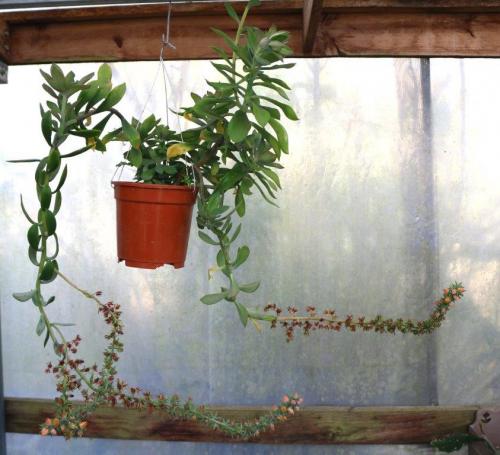
Fig. 8 shows one of my older Tisey plants in the greenhouse with a rangy and pendant growth form.
In summary, from my experience at three sites and growing them in cultivation these plants seem at their best in very moist shady locations in cloud forest. They adapt well to hanging baskets and flower pots but probably need pruning to keep them compact.
The variation in growth habit, flower colour and leaf shape makes field identification difficult. The slight differences of the San Luis specimens need further investigation but they may just be due to the substrate or lighting conditions.
More habitat photos :
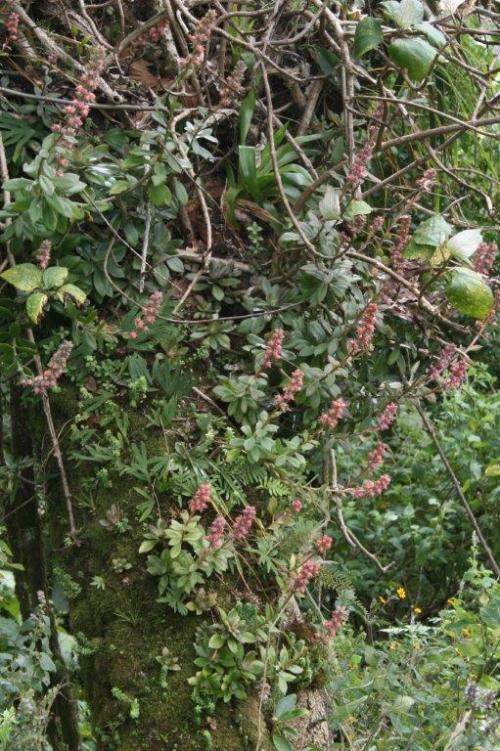
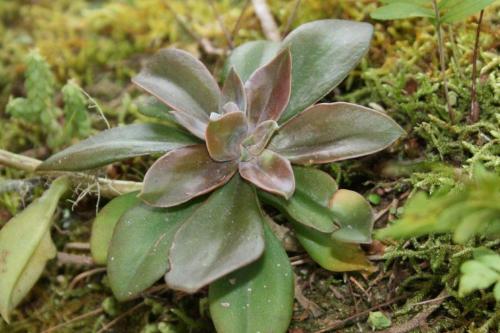
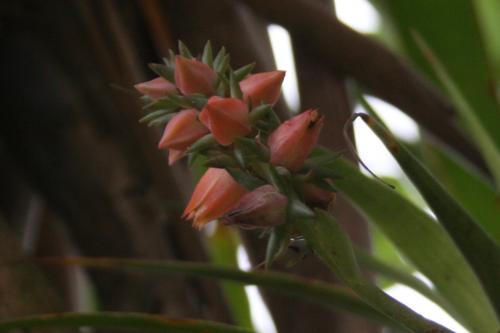
Photos Leland Smith
In habitat in Mexico :
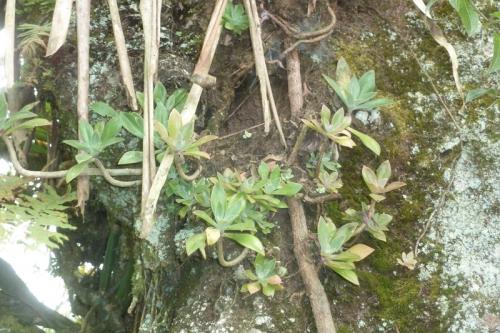
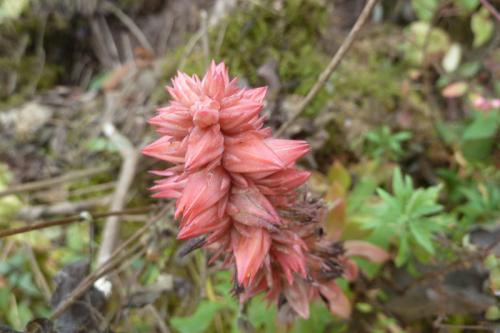
Photos Gerhard Köhres
In cultivation :
